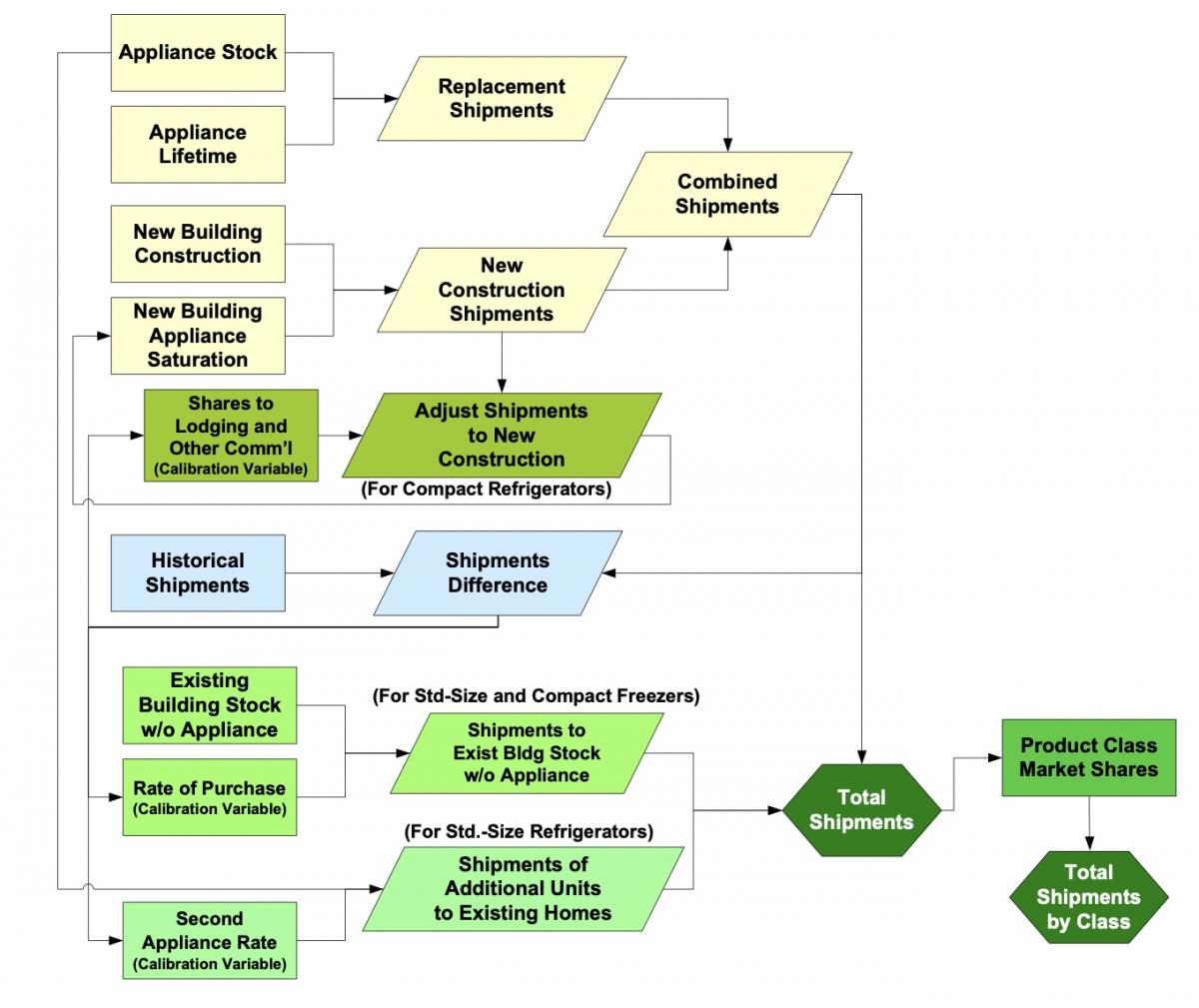Product Shipments Forecasting
We develop a shipment forecast for appliances and commercial equipment that generates an accounting of the purchase, repair, and replacement of products by fuel type and efficiency level, under different regulatory scenarios. Shipments projections are developed based on an analysis of key market drivers for the products under consideration. Inputs to the shipments modeling include product installed cost and operating costs, as well as forecasts of relevant macroeconomic variables, such as construction rates and energy prices. The structure of a typical shipments model is shown in the chart below.
The shipments model contains a component for keeping track of existing stock, vintage, and failure rate and, in some cases, a component for explicitly modeling consumer decision-making. In some cases, consumer choice is modeled with a logit decision-probability function, as discussed below. The method provides an explicit quantitative approach to modeling regulatory impacts and provides a generic framework that can be applied to a wide range of products and policy options.
Typical Shipments Model Structure

Consumer Choice Modeling
For products where data are available, we use an econometric discrete-choice model to estimate market shares for representative technology options (i.e., efficiency levels) based on consumer sensitivity to product features. Using historical market data, we identify those product features (e.g., retail price, energy efficiency, etc.) which most impact consumer demand and estimate consumer sensitivity to each feature to quantify how market demand changes as a function of each feature. The consumer-choice model allows our team to model the impact of internal and external factors such as policy program, the introduction of new technology to the market, or the systematic decrease in product price over time.
Market Assessment
To help assess the market for energy-efficient products, we gather data from various retail sources, including web scraping retail websites and purchasing data from market research firms. The data includes the price, energy efficiency, and other features of products for sale on the U.S. market. The data help us in determining the price of more-efficient products relative to less efficient ones, as well as in tracking the evolution of the market with respect to the market shares of products with different efficiencies.
Related Publications
Fujita, K. Sydny. Estimating Price Elasticity using Market-Level Appliance Data. 2015. LBNL-188289. PDF.
Gerke, Brian F, Michael A McNeil, and Thomas Tu. "The International Database of Efficient Appliances (IDEA): A new tool to support appliance energy-efficiency deployment." Applied Energy 205 (2017) 453 - 464. DOI
Gerke, Brian F, Allison T Ngo, and Kibret S Fisseha. Recent price trends and learning curves for household LED lamps from a regression analysis of Internet retail data. 2015. LBNL-184075. PDF.
